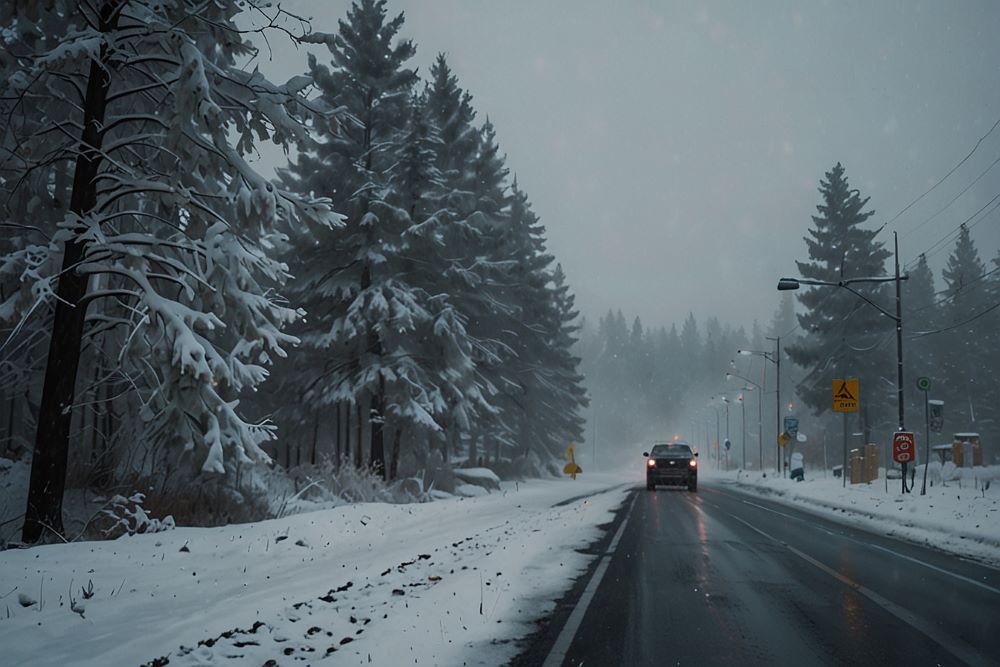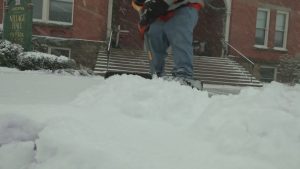Published on October 12, 2025
Winter weather advisories are currently impacting travel across various parts of the U.S., bringing snow and ice to regions including Washington, Alaska, the Upper Midwest, and Central States. These weather conditions are making roads hazardous, causing significant disruptions for drivers. In Washington, areas above 3,000 feet are expecting heavy snow, while Alaska faces strong winds and icy roads, making travel challenging. Meanwhile, the Upper Midwest and Central States are dealing with snow accumulation and freezing rain, which could lead to dangerous driving conditions and power outages. Drivers across these areas are urged to exercise extreme caution and prepare for potential delays.
As temperatures drop and snow continues to fall, conditions are expected to worsen, especially in mountainous and rural regions. Travel plans should be closely monitored, and if possible, delayed or adjusted to avoid the worst weather. This advisory is just one of many seen across the U.S. in recent weeks, with other regions dealing with similar winter weather events, including Alaska, the Upper Midwest, and Central U.S. States.
Advertisement
Snowfall and Wind Forecast for Chelan County
Advertisement
The NWS Spokane warns of significant snowfall, especially above 3,000 feet. For elevations between 3,000 and 4,000 feet, total snow accumulations of 2 to 6 inches are expected. At higher elevations above 4,000 feet, snow accumulation could range from 6 to 12 inches. Snow is expected to fall most heavily through Sunday night and into early Monday morning.
Additionally, breezy winds are forecast to develop by Monday, creating wind chill values in the teens. Travelers should expect poor visibility and potentially hazardous conditions on mountain passes such as Stevens, Blewett, and Loup Loup. For those planning to venture into backcountry areas, the NWS advises extra caution as weather conditions could rapidly degrade.
Winter Weather Driving Tips: Stay Safe on the Roads
The NWS has provided several winter weather driving tips to help motorists stay safe in these challenging conditions:
- Slow Down: The best way to stay in control of your vehicle on icy or snowy roads is to reduce your speed. This is especially important when driving over mountain passes where snow can accumulate quickly, making roads slick.
- Assume Ice on Roads: If temperatures are near or below freezing, it is safest to assume that ice is present on the roads. This is particularly important on bridges, overpasses, and shaded areas.
- Avoid Travel When Possible: If conditions are expected to worsen or roads become impassable, it is best to avoid travel altogether. If you must travel, consider waiting until conditions improve.
- Prepare Your Vehicle: Make sure your gas tank is full, and pack essential emergency supplies, including a windshield scraper, jumper cables, flashlight, blanket, extra clothing, water, and high-calorie food.
- Stay Informed and Alert: Always check road conditions before departing, and be aware of snowplows clearing the roads. When driving near snowplows, maintain a safe distance and only attempt to pass when it is safe to do so.
Similar Winter Weather Events Across the U.S.
While Chelan County’s advisory is the latest to be issued, it follows similar warnings across various regions of the United States, showing that winter weather is impacting many areas earlier than expected this season. Below are some other regions currently or recently under similar weather advisories:
Advertisement
Alaska’s Northern Regions: Snow, Ice, and Cold Temperatures
Advertisement
In Alaska, the NWS issued a winter weather advisory for parts of the Northern Interior, including the White Mountains and surrounding areas. The advisory was in effect from Thursday to Friday, with snow accumulations of up to 9 inches expected in some areas. Cold temperatures, icy conditions, and strong winds were anticipated, making travel challenging and hazardous, particularly for those planning to travel along remote or unmaintained roads. The region also faced a wind chill advisory, with some areas feeling like -15°F or colder.
The Upper Midwest: Minnesota, Wisconsin, and the Dakotas
A fast-moving winter storm has already left its mark on the Upper Midwest, causing disruptions across Minnesota, Wisconsin, and the Dakotas. North Dakota was particularly affected, where a mix of snow, freezing rain, and ice created dangerous driving conditions. Wind gusts of up to 50 mph further complicated the situation, reducing visibility and increasing the risk of crashes. Major highways and interstates were closed, and drivers were urged to avoid travel unless absolutely necessary. The NWS issued winter weather warnings, cautioning that roads could become impassable, and power outages could occur due to the weight of snow and ice on trees and power lines.
Central United States: Missouri, Kansas, and Beyond
The winter storm dubbed Winter Storm Blair recently impacted much of the central United States. States such as Kansas, Missouri, Arkansas, and West Virginia faced a mixture of heavy snow, ice, and freezing temperatures. In some areas, snow accumulation reached up to 14 inches, with widespread disruptions to transportation and power. Roads became treacherous, and numerous power outages were reported as ice accumulated on power lines and tree branches. Travelers in these areas were advised to stay off the roads and to keep emergency kits in their vehicles. Widespread closures were reported, and travelers were urged to stay updated on road conditions before venturing out.
Winter Weather Preparedness: Key Takeaways
As winter weather impacts more areas across the U.S., it is vital to be prepared for the conditions ahead. Whether you are in Washington, Alaska, or the Midwest, the same winter weather principles apply. The key to staying safe during these early-season storms is planning, staying informed, and adapting to changing conditions.
Before heading out on the roads, always check weather and road conditions, and if travel is not necessary, stay home. In case you do need to travel, ensure your vehicle is winter-ready and carry emergency supplies. Remember that a slow, steady pace can help prevent accidents, and staying alert to your surroundings can make a significant difference in your safety.
As winter weather becomes more widespread, it’s clear that the early snowfalls are causing major disruptions to travel. Whether you’re in Central Chelan County or the Upper Midwest, following safety advice from the NWS and other weather services will help you navigate these challenging conditions with greater confidence. For the latest updates, always refer to official weather advisories and stay updated with the NWS and other reliable weather agencies.
Advertisement
Advertisement
Tags: hazardous travel, snow and ice, travel disruptions, winter storm, Winter Weather Advisory
I want to receive travel news and trade event update from Travel And Tour World. I have read Travel And Tour World’sPrivacy Notice.
Sunday, October 12, 2025
Sunday, October 12, 2025
Sunday, October 12, 2025
Sunday, October 12, 2025
Sunday, October 12, 2025
Sunday, October 12, 2025
Sunday, October 12, 2025
Sunday, October 12, 2025




